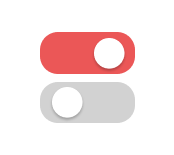The Fun Theory: A social experiment and a Case Study in Interaction Design and User Engagement
In 2009, Volkswagen launched "The Fun Theory", an initiative demonstrating how interaction design can drive behavioural change by making everyday activities enjoyable. The campaign, which aimed to promote Volkswagen's BlueMotion Technologies, aligned with principles of human-computer interaction (HCI) and gamification, showcasing how interactive technologies and design interventions can enhance user engagement and encourage positive habits. Interaction Design and the Fun Theory Interaction design (IxD) focuses on crafting experiences that facilitate meaningful interactions between users and systems. By leveraging playful, engaging, and intuitive interfaces, interaction designers aim to influence human behaviour in a positive way. The Fun Theory campaign served as an experiment in persuasive design, proving that fun and interactivity can nudge people toward healthier, safer, and more sustainable behaviours. The campaign used sensor-based interfaces, auditory and visual feedback, and gamification to transform mundane actions into interactive experiences. Each experiment demonstrated how user engagement with interactive technologies can reinforce positive [...]




